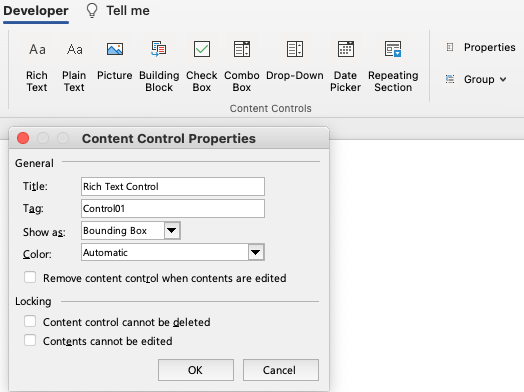In a corporate environment, you normally need new documents to appear with company branding instead of reusing Microsoft’s designs. Here’s how to set a default template or theme so that each new document, presentation or workbook looks like your company guidelines (or your personal preferences).
Set a Default Template or Theme – Best Practices
Template or Theme – Choosing a Format
Templates contain a theme, but a theme is much simpler than a template. You may need to create both types of files. If your goal is to create a unified look in Office, you’ll want to create a theme, then apply it to templates in Word and Excel.
A Theme file contains a Color Theme, a Font Theme and an Effects Theme. It also contains the slide layouts that were in the PowerPoint file when you saved it as a theme. For this reason, you can use a theme as a mini template for new PowerPoint presentations.
Themes provide minimal formatting information for the templates to which they are applied. A theme will supply a set of 12 colors, 2 fonts and a set of visual effects for inserted shapes. It’s possible to add up to 50 custom colors to a theme. Effects themes format the defaults for inserted shapes, but are not editable in any version of Office. I recommend our Flat effects theme, which is more in tune with current graphic design trends than what Microsoft supplies.
When your goal is a full-featured starting point for new files, you’ll want to create a template instead of a theme. Templates can include sample content, typestyles, VBA macro programming and AutoText, depending on the file format. Here at Brandwares, we almost always supply templates rather than themes.
Create a Better Default Template Experience
In Office on both Windows and Mac, Microsoft has decided that the first thing you need when you open an Office program is to be offered a creative choice in what kind of off-brand document you’re going to create today. In a corporate environment, or really any circumstances where you just need to get work done, this is an unneccessary distraction. You really just need to have a default document open so you can get down to business.
If the Backstage or Gallery displays, when an Office program starts, the program will not automatically create a new file from the default template. You would have to have a file open, then press Ctrl + N (Command + N on a Mac) to create a new file from your template. This limits the usefulness of a default template.
In Office for Windows, you’ll get a better default document experience if all the programs do not show the Backstage on starting. In all three programs, choose File>Options>General and uncheck Show the Start screen when this application starts. Once you do that, opening the program will also open a file created from the default template.
Office for Mac features similar Gallery screens that open by default when the program starts. Turn these off. In PowerPoint, choose PowerPoint>Preferences>General and uncheck Open Presentation Gallery when opening PowerPoint. In Word, choose Word>Preferences>General and uncheck Show document gallery when opening Word. Excel is similar: Excel>Preferences>General and uncheck Show Workbook Gallery when opening Excel.
Set a Default Template or Theme in PowerPoint
I’m starting with PowerPoint because it’s the only Office program that can save a Theme file. In Office for Mac, PowerPoint is also the only program that can create a Color Theme,. (To create a custom Font Theme in Office for Mac, please see this article: OOXML Hacking: Font Themes.) A theme created in PowerPoint can be applied to Word and Excel to give a basic uniform look to documents and workbooks. Theme files cannot contain sample slides, custom table styles, VBA code or preformatted Notes or Handout masters. If you need any of those items, create a template instead of a theme.
Unlike Word, PowerPoint doesn’t have a source file that serves as the starting point for new presentations, analogous to Normal.dotm in Word. But you can give it one! Start by making a copy of your template or theme. Templates will have a file ending of .potx or .potm, while themes will end with .thmx. Change the file name to Default Template, leaving the file ending unchanged.
Here are the steps in PowerPoint for Mac:
- While holding down the Option key, click on Go in the macOS menu bar and choose Library. Your hidden user Library folder opens.
- Navigate to ~/Library/Group Containers/UBF8T346G9.Office/User Content/Themes
- Drag the Default Theme template or theme into the Themes folder.
- Open PowerPoint and choose File>New Presentation or press the Command + N key combination to create a new presentation. The new deck is formatted per your template or theme.
Here are the steps for PowerPoint for Windows
- Open a File Explorer window
- Copy and paste this text into the address bar:
%appdata%\Microsoft\Templates\Document Themes - Drag the Default Theme template or theme into the Document Themes folder.
- In PowerPoint, use the Ctrl + N keyboard shortcut to create a new file from your default template or theme. Or choose File>New, then click on the Default Theme icon at the upper left end of the row of recently used templates and themes.

Set a Default Template or Theme in Word
Setting a template default in Word can be a bit tricky, because Word already has one: the Normal.dotm file. The wrinkle is that Normal.dotm is also the default storage location for user-created content like macros, custom typestyles and AutoText. A minimalist approach is to apply a new theme to an existing Normal.dotm, sidestepping those issues.
Set a Default Theme in Word
A Word-created Normal.dotm always has the Office theme applied to it. You can set a different theme for new documents by editing Normal.dotm and applying a theme file you’ve created in PowerPoint. This is safe for user-created content, as no content is deleted. Custom styles that were based on the Office theme will change appearance, but otherwise keep their characteristics.
Themes are limited in scope, but if your branding goals are limited, that may be enough. Here are the steps for macOS:
- With Word open, press Option + F11. The VBA editor opens.
- Press Command + Ctrl + G. The Immediate window opens in the VBA editor.
- Copy and paste this text into the Immediate window, then press return:
application.NormalTemplate.OpenAsDocument
The Normal template opens in Word. Close the VBA editor. - Choose Design>Themes>Browse for Themes, find and select the Theme file you saved from PowerPoint, then click on Open.
- Save Normal.dotm, then close it.
Here are the steps for Word for Windows:
- With Word open, press Alt + F11. The VBA editor opens.
- Press Ctrl + G. The Immediate window opens in the VBA editor.
- Copy and paste this text into the Immediate window, then press Enter:
application.NormalTemplate.OpenAsDocument
The Normal template opens in Word. Close the VBA editor. - Choose Design>Themes>Browse for Themes, find and select the Theme file you saved from PowerPoint, then click on Open.
- Save Normal.dotm, then close it.
Replace Normal.dotm in Word
If your users may have saved macros, styles or AutoText content, make a copy of Normal.dotm before replacing it, then to use Word’s Organizer feature to copy custom content back to the new template. Here is the procedure to replace Normal.dotm in Word for macOS:
- Close Word
- While holding down the Option key, click on Go in the macOS menu bar and choose Library. Your hidden user Library folder opens.
- Navigate to ~/Library/Group Containers/UBF8T346G9.Office/User Content/Templates
- Drag in the new Normal.dotm file and confirm that you want to replace it.
- Restart Word to test that a default document matches the new formatting.
The steps for Word for Windows are complicated by Microsoft’s June 2024 change to the default location of Normal.dotm. These instructions cover Word 2019 and older editions:
- Close Word
- Open a File Explorer window
- Copy and paste this text into the address bar:
%appdata%\Microsoft\Templates - Drag the new Normal.dotm file into the Templates folder and confirm that you are replacing the file.
- Restart Word to test that a new document matches the new formatting.
As of June 2024, for Microsoft 365 and Word 2021, Normal.dotm has been moved to the Custom Office Templates folder in the user’s Documents folder. The default path is C:Users\YourActualUserName\Documents\Custom Office Templates
Set a Default Template in Outlook
Outlook uses the template called NormalEmail.dotm to set email formatting. It’s stored in the same folder as Normal.dotm. Follow the same steps as for Normal.dotm: close Outlook, edit NormalEmail.dotm in Word (not Outlook), then replace the template. It’s unlikely that NormalEmail.dotm will contain macros, custom styles or AutoText, so you don’t need the precaution of backing up the file before replacing it.
Set a Default Template in Excel
After formatting a workbook with a custom theme, typestyles and any other necessary formatting, save the file in template (.xltx) format with the name Book.xltx.
PowerPoint for Mac Excel steps:
- Close Excel.
- While holding down the Option key, click on Go in the macOS menu bar and choose Library. Your hidden user Library folder opens.
- Navigate to ~/Library/Group Containers/UBF8T346G9.Office/User Content/Startup/Excel
- Drag the Book.xltx file into the Excel folder.
- Open Excel. In Excel for Mac, opening the program creates a new workbook from your template. You can also choose File>New Presentation or press the Command + N key combination to create a new workbook. The new deck is formatted per your template.
Excel for Windows doesn’t work as well as it used to Book.xltx, so there are more steps:
- Close Excel
- Open a File Explorer window
- Copy and paste this text into the address bar:
%appdata%\Microsoft\Excel\XLSTART - Drag the Book.xltx into the XLSTART folder.
- Open Excel to test.
I also recommend that Windows users add a second copy of Book.xltx to the Custom Office Templates folder at C:Users\YourActualUserName\Documents\Custom Office Templates. Call this one something like Default Workbook. The first time you use it, you’ll need to choose File>New>Custom Office Templates to choose it. After that first use, it will display in the row of Excel templates:
Here is Microsoft’s page about setting a default Excel template.
Default Template Limitations
In PowerPoint for Windows, you can’t get rid of the Blank Presentation thumbnail. Clicking on that will only get you a Microsoft default presentation. Likewise, in Excel for Windows, you can’t remove Blank Workbook, which also delivers a Microsoft default.


